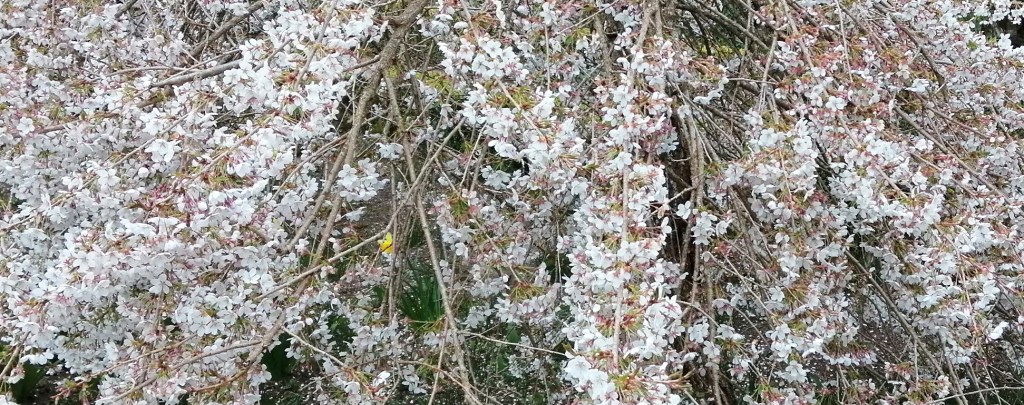
April is the cherry month and whilst there are plenty of cherries around Torphins, I will miss the Crathes specialities. However, I was amazed to see James’s photograph of the Prunus incisa ‘Moerheimii’ on the Doocot Border in full flower. I don’t remember it being so covered in bloom in previous years. I struggled with the name on the label which was not in Bean (1980); neither did Google help. Maybe it was Prunus x yedoensis ‘Moerhemii’? But a book by Geoffrey Chadbund, Flowering Cherries (1972) lists P. incisa, the ‘Fuji Cherry’ as having a variety ‘Moerheimii’ with ‘spreading weeping form making a small tree with long trailing branches, like a small weeping willow’. Perfect.

Google did enlighten me about the name Moerheim: The Royal Moerheim Nurseries of the Netherlands were founded in 1888 and became one of the most important perennial nurseries of the early twentieth century.
One of the particular daily pleasures at the moment is to go into our garden and stand beside/under the large flowering currant bush. The noise of the many bumble bees and honeybees collecting nectar is just a joy. The flowering currant, Ribes sanguinium, may smell of cats’ pee but it looks pretty good and is a top bee plant for early spring. A young plant – especially for the bees – was one of our first purchases when we first arrived in Torphins. There are a few ribes species in the Crathes Walled Garden including the unusual Ribes laurifolium.

The common flowering currant does well in the estate down by the Millpond. Where the Douglas firs were felled on the north-east bank of the Millpond about five years ago there has been an explosion of flowering currant growth in the scrub that now covers the bank. The plant is a native of western North America. It was first noted by Archibald Menzies and introduced by David Douglas in 1826 since when it has been a popular choice for gardeners across Britain. It often naturalises in Britain, but I can find no instance of it being an invasive problem. It’s good to think of the wild bumble and solitary bees enjoying this bounty.
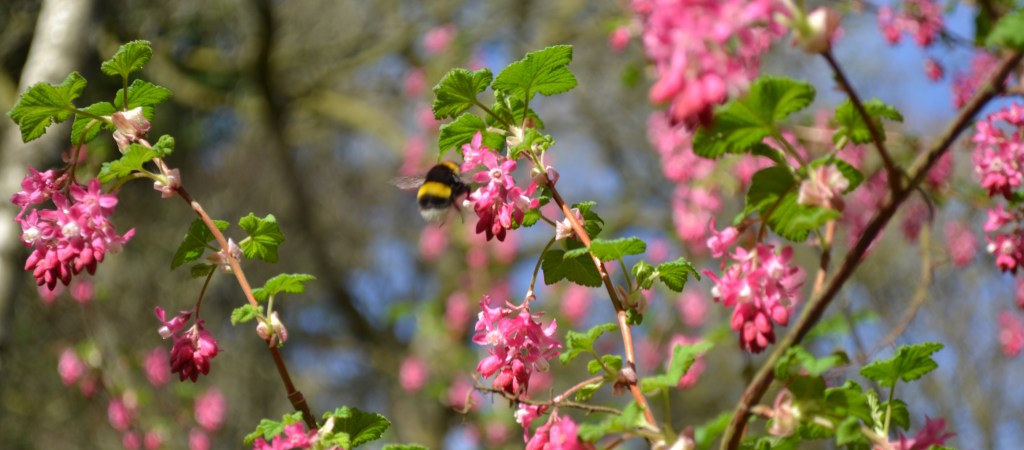
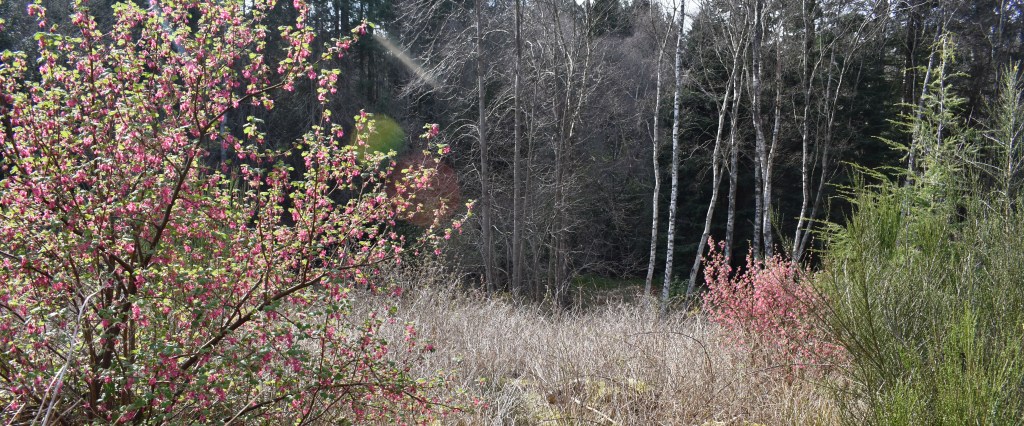
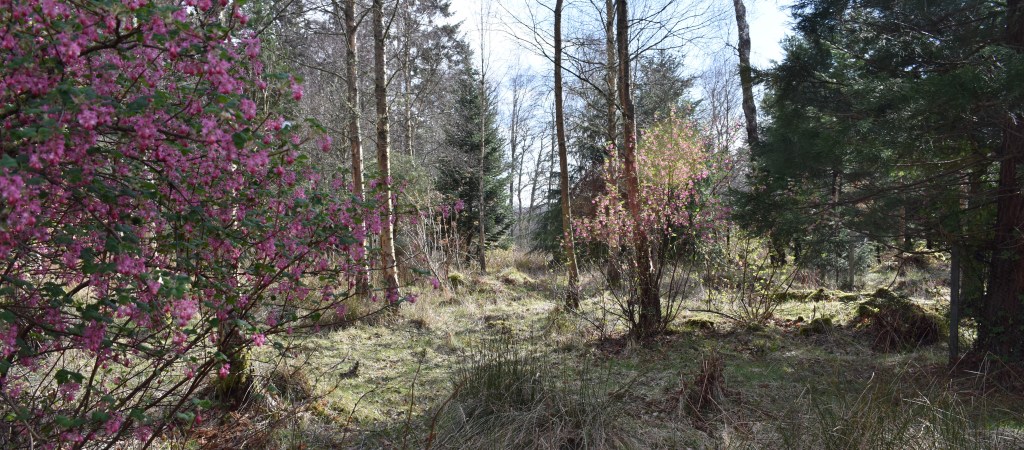
Ladybirds have been doing well in the last few years and James’s photograph shows us that this year appears to be no exception. Soon they and their larvae will be feeding on the proliferating aphids.
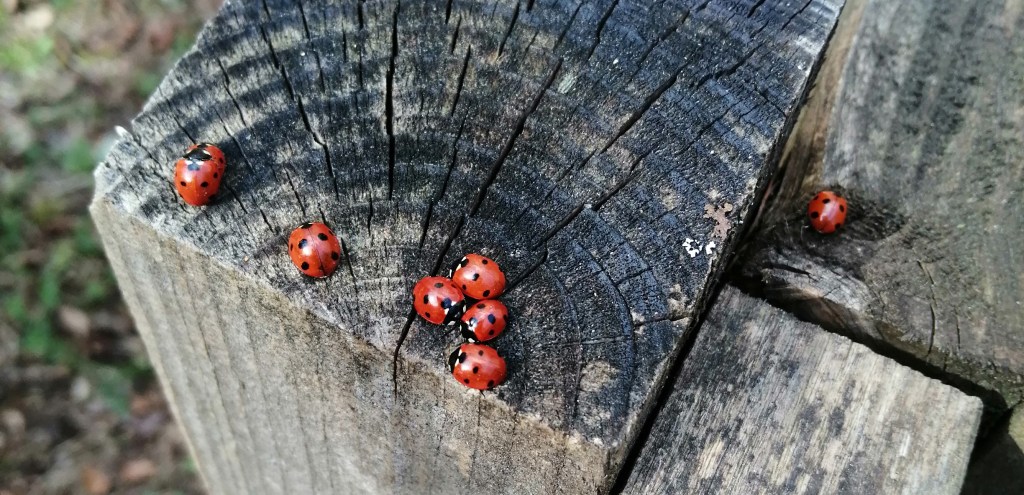
Keeping to the wildlife theme, oyster catchers often visit the Walled Garden about this time, but rarely succeed in raising chicks. Last year they made a nest in the large trough which gives the Trough Garden its name, but without success. Then they moved to the Golden Garden which was fenced off to protect them from the public. Without so much grass mowing and with no people about this year they’ll maybe make a go of it; the crows will be on the lookout though.


James reports that he and Andy have been mixing compost, potting up shrubs and half hardies and moving plants out to harden off. He has been pricking out Amaranthus ‘Dreadlocks’ and ‘Oeschberg’ – both new to Crathes – and Ammi visnaga ‘Green Mist’. Biological controls are being released in the glasshouses. Andy has been watering the croquet lawn and edging some areas. The polytunnels are being emptied with the (cancelled) May sale items all looking great.

As far as I know work has stopped on the Evolution Garden work, but you can see from the photographs that some work continued through March.
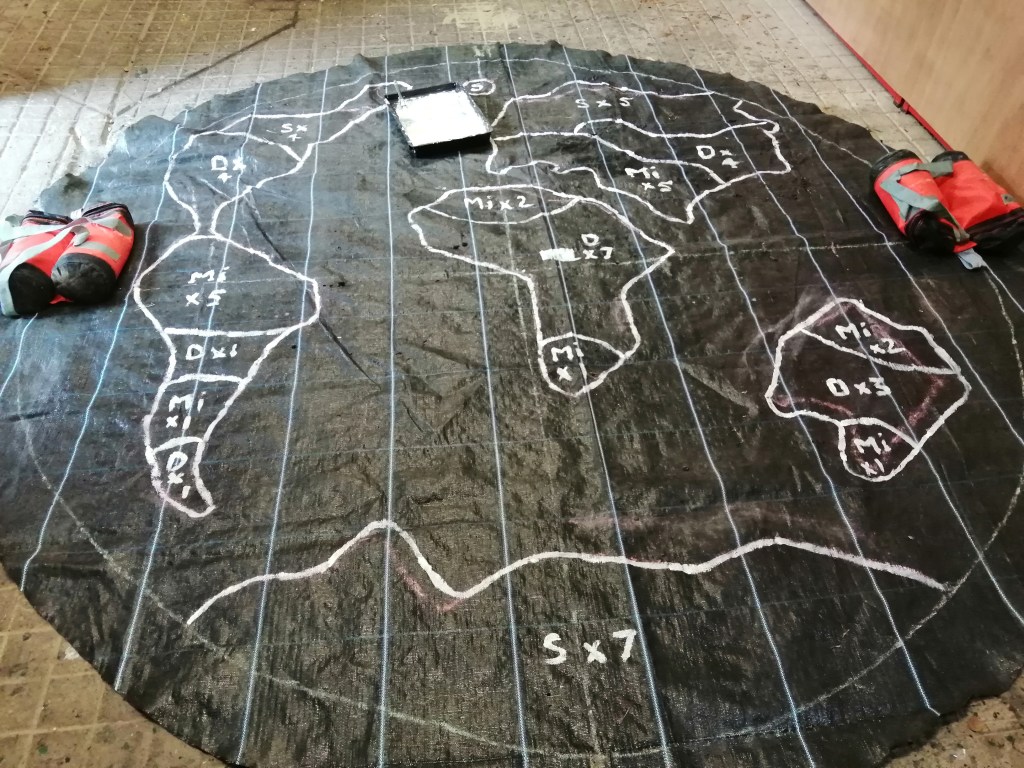
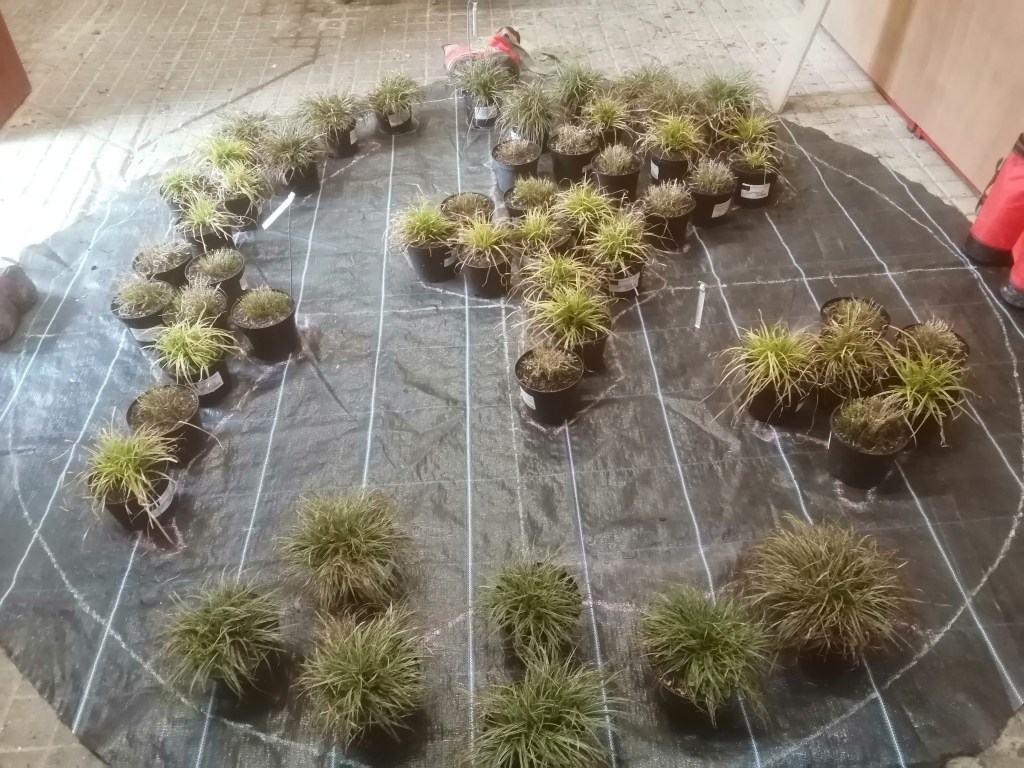

Whilst much of Britain had the wettest February on record, sometimes with devastating floods, the North-East of Scotland suffered from lack of rain and snow. There is now a severe water shortage in Aberdeenshire and we are all being asked to reduce our usage. The croquet lawn is of particular importance at Crathes at any time, but also because of problems dating back a few years – more of this maybe at a later date. Many of the Crathes trees suffered in the 2018 drought and another year of drought will stress them even further. The temperature in Scotland is very much subject to the vagaries of the Jet Stream. On Thursday (9th April) in Aberdeenshire it was hat and glove weather, yesterday and today it is balmy. What will it be tomorrow? If only it were a decent fall of rain.
The Empress Josephine’s garden at Malmaison is one of the many famous gardens of France and located about ten miles to the west of Paris. Josephine (1763-1814), wife of Napoleon I, bought the run-down estate of Malmaison in 1799. There she created a famous garden which she filled with exotic plants and animals. Kangaroos, zebras and ostriches were some of the wild animals that ran about freely on her estate. Part of the garden was devoted to roses of which she was particularly fond. The rose ‘Souvenir de la Malmaison’ was named in remembrance of the garden in 1843.
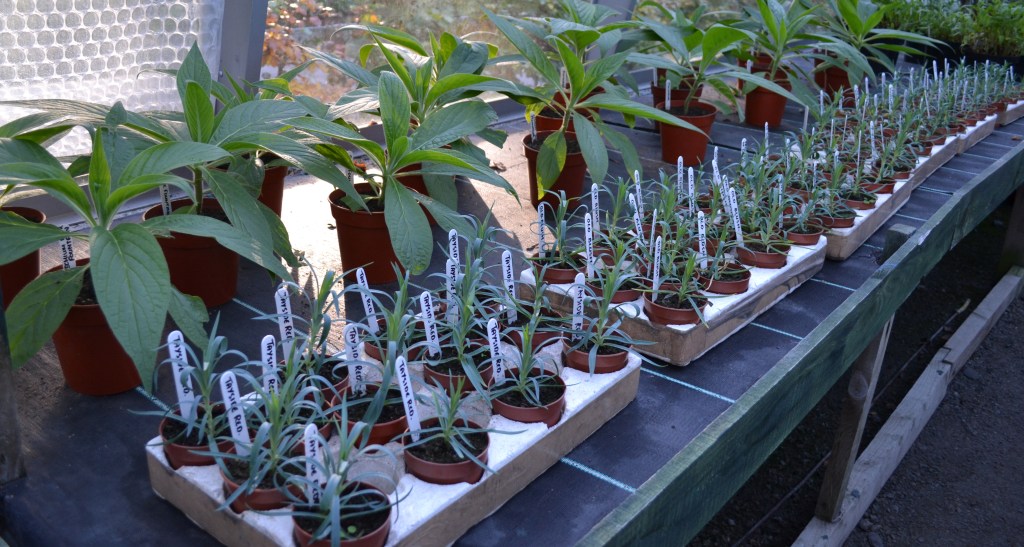
No, I’m afraid we don’t have this rose at Crathes, as far as I know, but what we do have is part of the National Collection of Malmaison carnations. The flower originated when a Monsieur Laine found a distinctive seedling amongst his tree carnations in 1857 – tree carnations were the forerunner of perpetual flowering carnations, but are no longer to be found. More compact in growth than the ungainly tree carnations, with large pink flowers and a heavy clove scent, Monsieur Laine’s discovery quickly became popular. It was called ‘Old Blush’ or ‘Souvenir de la Malmaison’ because of its similarity to the rose of that name. In Britain the plant was taken up by David Thomson at Archerfield House near North Berwick (East Lothian) in 1864. As the vogue for the flowers spread some sports were developed in the late nineteenth century. The fashion for Malmaison carnations reached its peak in Edwardian times when a vase of these flowers was an impressive status symbol for the big country houses of Britain.

Those private big country houses are of another era and after the Second World War the Malmaison carnations were largely lost. A few cultivars were rescued by Jim Marshall of Ipswich who also has a National Collection and sometimes exhibits at shows such as Hampton Court. Crathes received cuttings from Jim Marshall in, I think, the 1980s.
These Malmaison carnations need an inordinate amount of care. The plants have a brief life of about two years. The cuttings are prone to viruses and need to be revitalised by micro-propagation on occasion. Joanna, the Crathes propagator, who is now at home under the lockdown, writes:
[until 20 March 2020] I have been watering moderately and according to daily weather conditions, feeding the Carnations every 2 weeks with seaweed fertiliser and misting with water or plant invigorator on sunny days to deter red spider mite and promote general good health. Four or five main shoots are trained up canes in each pot. All side shoots have been removed and some used as cuttings to continue the collection. A few flowering stems have appeared and have been disbudded to leave three well-spaced flowers per stem. Blooms would tend to be smaller and weaker if all left to develop. If preparing for showing all but one flower bud may be removed to create one superbloom.
The only cultivars now available are ‘Souvenir de la Malmaison’, ‘Princess of Wales’, ‘Thora’, ‘Tayside Red’, ‘Lady Windermere’ and ‘Duchess of Westminster’. In all cultivars the calyx usually splits which makes for quite an untidy flower.
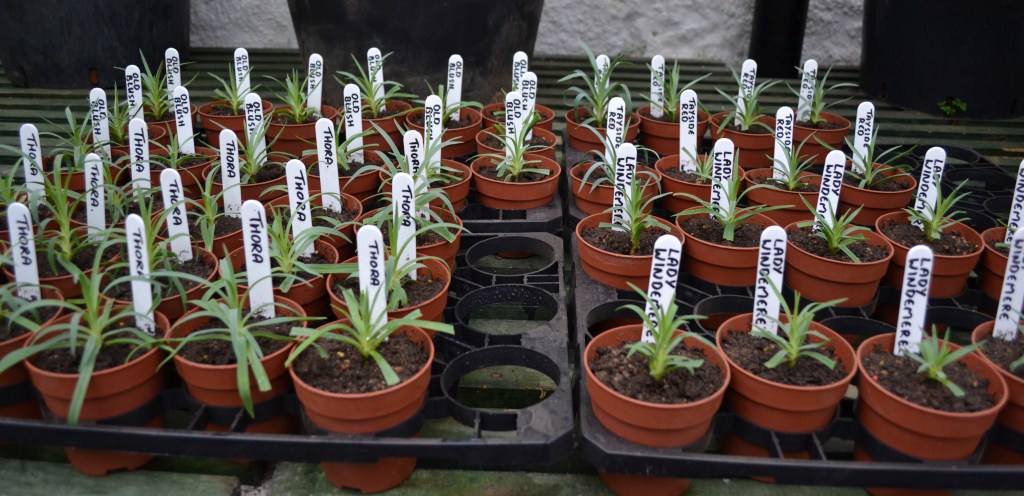
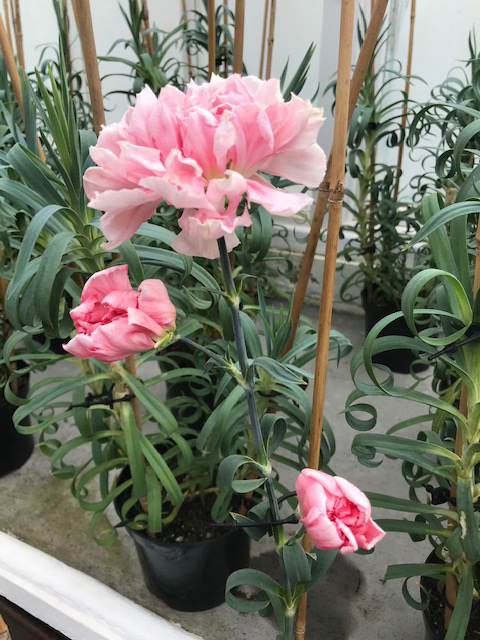
I always wonder when I see the time and space the collection takes up about its value to the garden. I do appreciate the historical aspect of the collection, and I would describe the scent as ‘magnificent’.
The British National Carnation Society claims that the plants are quite hardy and can be readily grown as sprays.
Whilst Joanna pines for her glasshouses she can be sure that James and Andy will be taking good care of the carnations – after all Andy looked after them for 21 years when he was in charge of the glasshouses.
Whilst we don’t have the ‘Souvenir de la Malmaison’ rose at Crathes, we do have other French roses, but maybe those should wait until the rose season is here.
Crathes has been following the modern fashion for succulents with some success, even managing to overwinter a few outside. A particular glasshouse success came from two plants of Aeonium tabuliforme which flowered in 2018. The seed that was gathered from these two plants produced many seedlings and another flowering is anticipated in the next year or two.

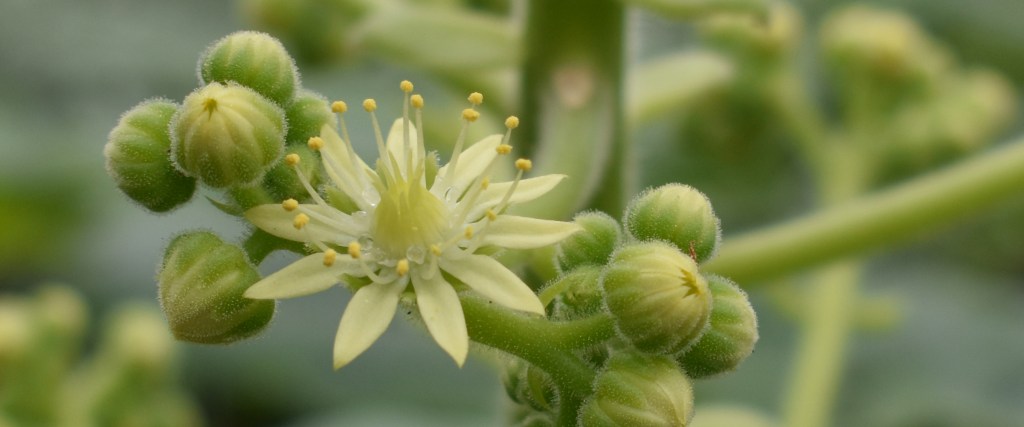
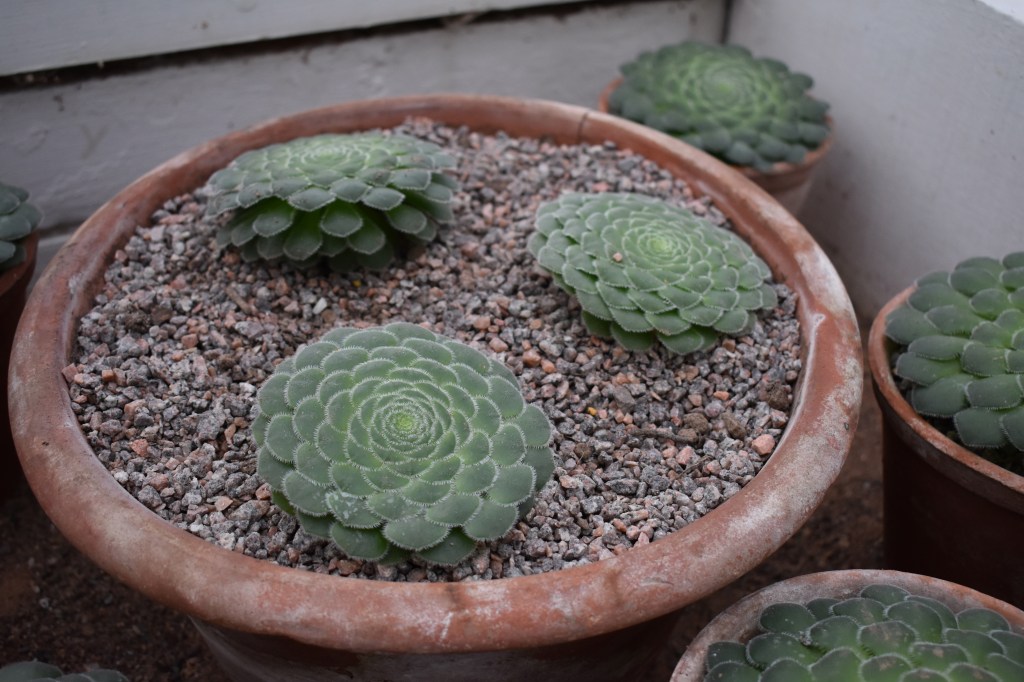
A. tabuliforme is endemic (found only) to Tenerife where it prefers a damp north-facing rocky environment. One of the other aeoniums in the glasshouse was just coming into flower in March. The flowers in both these aeoniums are reminiscent of the biting stonecrop, Sedum acre, – they and the sedums are of the family Crassulaceae. Also of Crassulaceae is Echeveria derenbergii, photographed by Joanna just before the lockdown. Bukiniczia cabulica is an attractive little succulent of the Plumbaginaceae family. It flowered in 2017 and self-seeded – appearing last year. It is taking its time to grow, but when it does flower it will die.

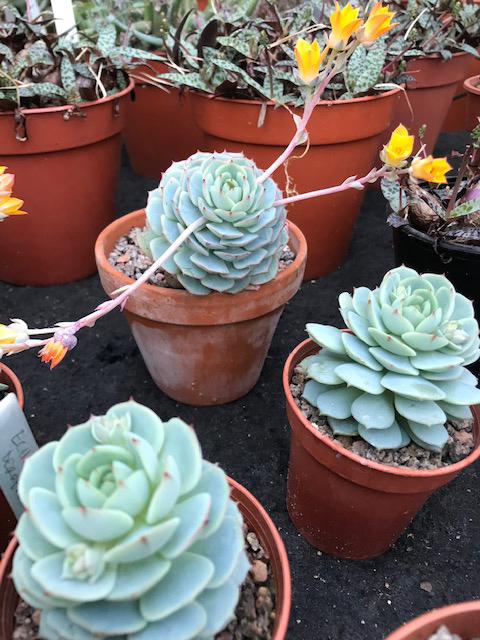
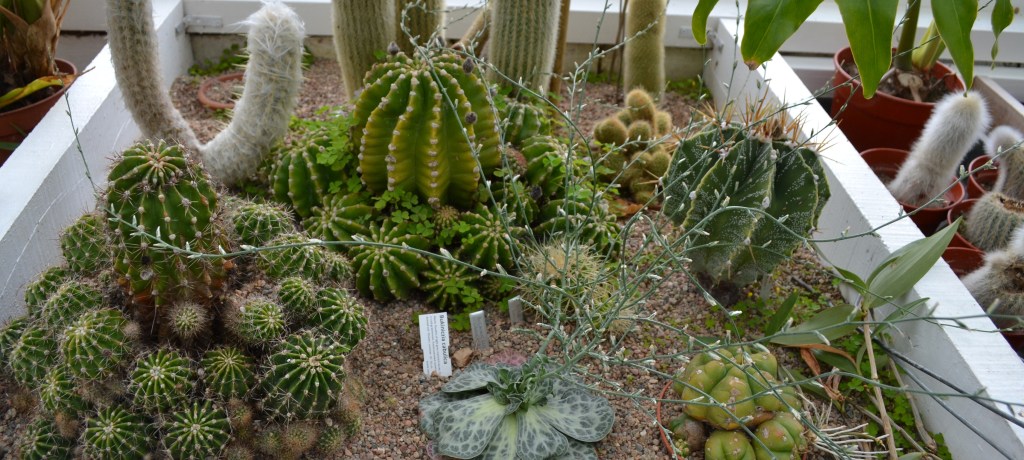
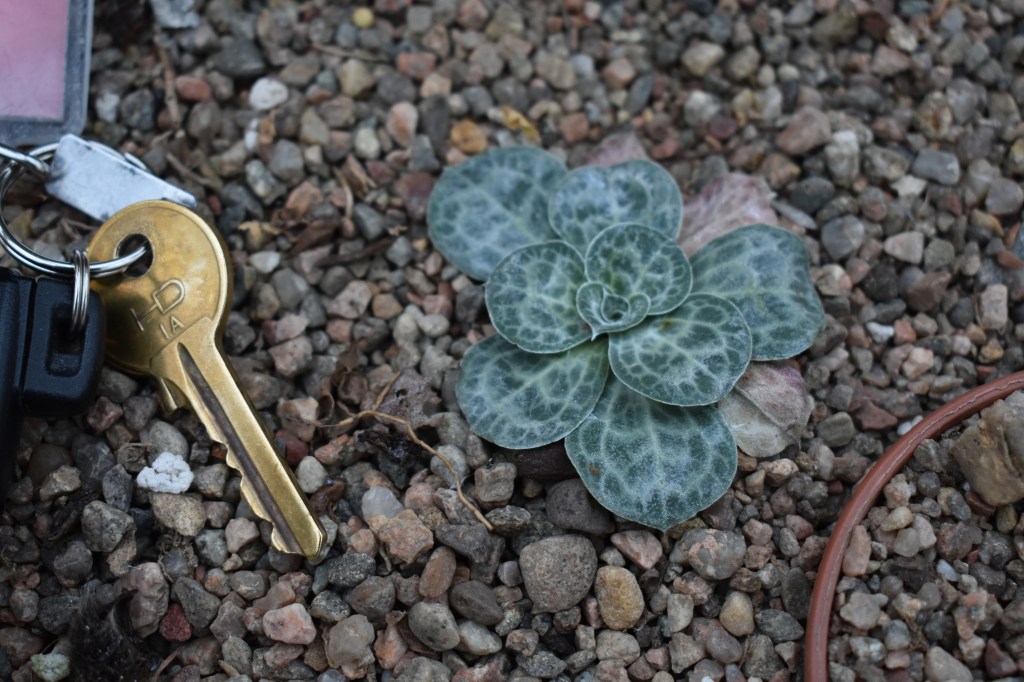
I will leave you with some photographs from James and from previous years of the first half of April. Here’s a few of the lovely flowers we are missing.

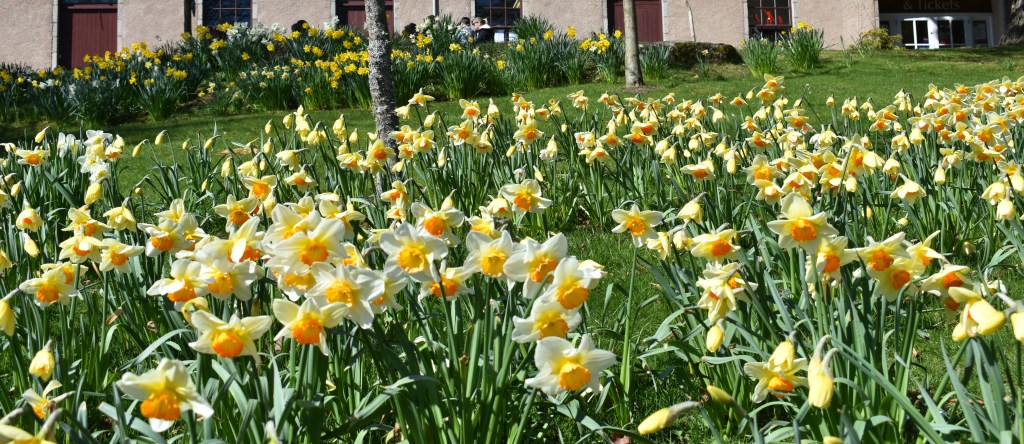

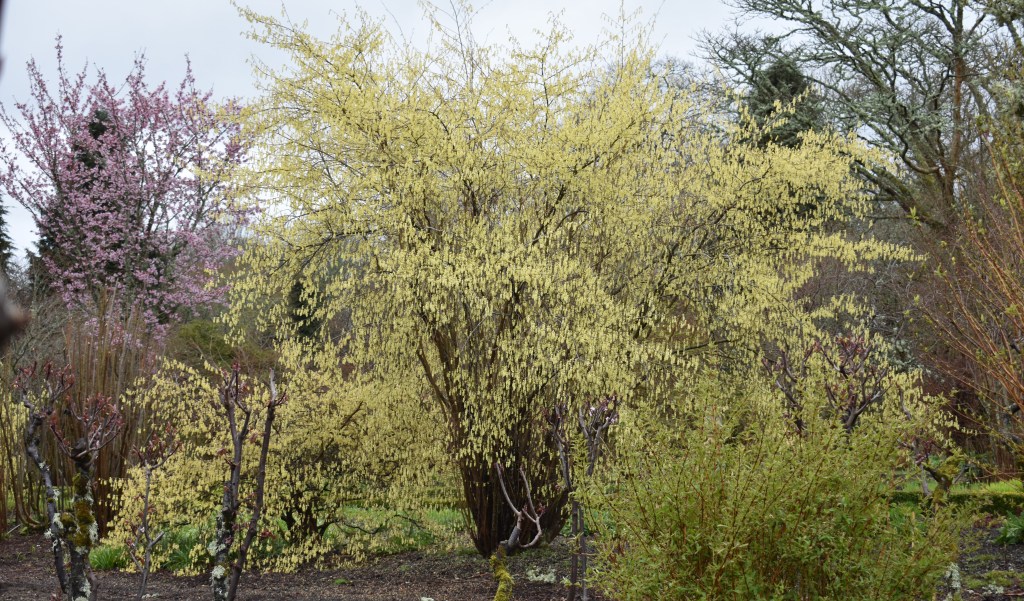
Keep safe everyone.
Susan, This is a great update. I’m really missing my Tuesday working in the garden and missing everyone. James and Andy doing a sterling job. Sheila
LikeLike
Thanks Sheila. I’m so missing the garden too.
LikeLike